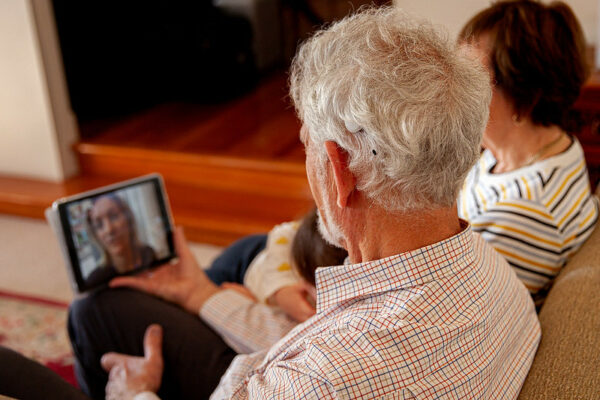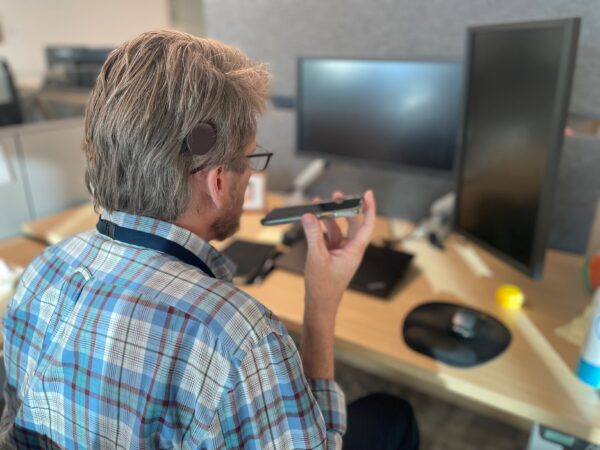For most cochlear implant recipients, hearing rehabilitation is a valuable tool to help you get the most out of your hearing device. We asked audiologists to weigh in about how rehabilitation can be beneficial to recipients, and to share their top tips for getting started with aural rehab. For recipients who aren’t sure if they need rehabilitation or don’t know where to start, these audiologists’ insights will inspire you to take control of your hearing journey and point you in the right direction on how to get started.
Why invest the time and effort in hearing rehabilitation?
Among the audiologists we surveyed, aural rehabilitation ranked among the most important things recipients can do after receiving their cochlear implant to hear their best. While a few lucky recipients instantly have excellent hearing performance the first time they turn on their sound processor, most recipients find that their hearing continues to improve with time and practice. Hearing rehabilitation can include practice activities, exercises and games that can help you learn to identify sounds, distinguish words, hear better in noise and more. Audiologists shared some of the benefits of aural rehabilitation for recipients:
- Rehabilitation can help you retrain your brain, not just your ears. It’s a common misconception that learning to hear again after hearing loss is primarily about your ears. The truth is, while regaining access to sound with your ears is the first step, your brain must also reacclimate to processing sounds and understanding them. The audiologists we surveyed shared that aural rehab can help you retrain both your ears and your brain to recognize and process sound. Depending on how long you’ve had hearing limitations and when you received your cochlear implant, it may take some time for your brain to relearn things it’s forgotten. Audiologists shared that in their experience, the recipients with the best long-term hearing performance are the ones who are willing to put in the effort to help their mind and their ears adapt to new sounds.
Dr. Carol Flexer, an audiology thought leader, shares her insights about how we hear with our brain1:“People typically think we hear with our ears, and that hearing loss therefore is a hearing issue. We actually hear with our brain, and the ears are the route that the sound takes on its way to the brain, where hearing actually occurs.”
- Hearing exercises may help you get comfortable in more challenging listening environments. Audiologists want their cochlear implant recipients to hear clearly in a variety of different hearing situations, and rehabilitation is a great resource to improve those listening skills. If you perform well on hearing tests in your audiologists’ calm and quiet office, but you still struggle to participate in conversations with family members at a noisy restaurant, you might not be getting the full benefit of your cochlear implant. The audiologists we surveyed listed many potential benefits of rehabilitation for hearing in challenging environments, including better hearing on the phone, a stronger ability to understand speech, better experiences listening to music, better hearing in noise and more.2
- Rehab can lead to better long-term hearing outcomes. While there are many benefits of practicing your hearing with aural rehabilitation, the one most frequently mentioned by audiologists is that rehab can improve your hearing outcomes. They shared that in their observations with recipients, those who dedicated the time and effort to rehabilitation had faster and more significant benefits, raised their long-term hearing performance ceiling, and were more comfortable and confident hearing with their cochlear implants.
I’m ready to hear my best. How do I get started with aural rehab?
Now that you’re ready for hearing rehabilitation and you’re determined to hear your best, it’s time to answer the next question: How do you get started? What do you need to know to be successful? Audiologists weighed in with their top tips for getting started with aural rehab with a cochlear implant:
- Schedule some dedicated time for rehabilitation – every day. With everything else on your to-do list and the demands of everyday life, it can be difficult to find time to practice your hearing. Audiologists agreed that having some time set aside every day, even just 30 minutes, was essential to getting the full benefit of hearing rehab. Whether you’re an early riser looking for something to do while you enjoy your morning coffee, or a night owl who is sharpest and most alert in the evening, find a time that works with your daily routine when you’re feeling fresh and relaxed, and set an alarm to remind you it’s time to practice your listening. When possible, try to enlist a friend or practice partner to help – you’ll be able to practice conversational hearing in real time.
- Use rehabilitation resources, including the Cochlear™ CoPilot3 app. The audiologists we surveyed highly recommended the resources available through Cochlear for hearing rehabilitation. The auditory training exercises can help you practice with a family member or friend, and Telephone with Confidence offers exercises with a recorded voice. If you’re an iPhone user, the CoPilot app is an interactive mobile app that features interactive skill builders, practice exercises, and tips for getting the most out of your device. The CoPilot app is particularly helpful if you don’t have a consistent practice partner for your hearing rehab exercises, because you can engage directly with the app’s pre-recorded exercises and games.
- Focus the practice on your implanted ear. Several audiologists suggested that recipients do their best to isolate the rehabilitation training exercises to their cochlear implant ear. For example, for bimodal recipients who hear with a cochlear implant in one ear and a hearing aid in the other, turn off the hearing aid so you’re listening with only the cochlear implant. For bilateral recipients with cochlear implants in both ears, turn off your sound processor for your earlier-implanted ear so you’re practicing with the newer one, or take turns practicing with each ear and then with both ears at the same time. For recipients with single-sided deafness, consider an earplug in your non-implanted ear, or stream sound from your mobile phone, television, or other device directly to your sound processor. If you’re working with a practice partner, some audiologists also recommended sitting next to each other facing the same direction, so you don’t rely too much on lip-reading. The goal is to make sure you’re developing your listening skills with your device, instead of falling back on old strategies of communicating with limited hearing.
- Audiobooks, podcasts, closed captions and more – the options are endless. Listen to what you enjoy! The audiologists we surveyed suggested a wide variety of content types to practice with. Several audiologists swore by reading out loud to yourself from a book, magazine or webpage, while others recommended listening to an audiobook and following along with the physical book. Some preferred podcasts, TED Talks or YouTube videos, while others favored watching a favorite movie or TV show with the captions on. But most of the audiologists agreed – it doesn’t matter what it is, as long as you find a hearing activity you enjoy and do it every day.
Looking for more tips and tricks as you start your aural rehab journey? Visit the Rehabilitation Resources section on our website to find more resources to hear your best.
- This is not an endorsement or recommendation of any particular healthcare provider. For a list of hearing specialists in your area, visit www.cochlear.com/us.
- Hirschfelder A, Gräbel S, Olze H. The impact of cochlear implantation on quality of life: The role of audiologic performance and variables. Otolaryngol Head Neck Surg. 2008 Mar;138(3): 357-362.
- For complete smartphone compatibility information, please visit www.cochlear.com/compatibility.

